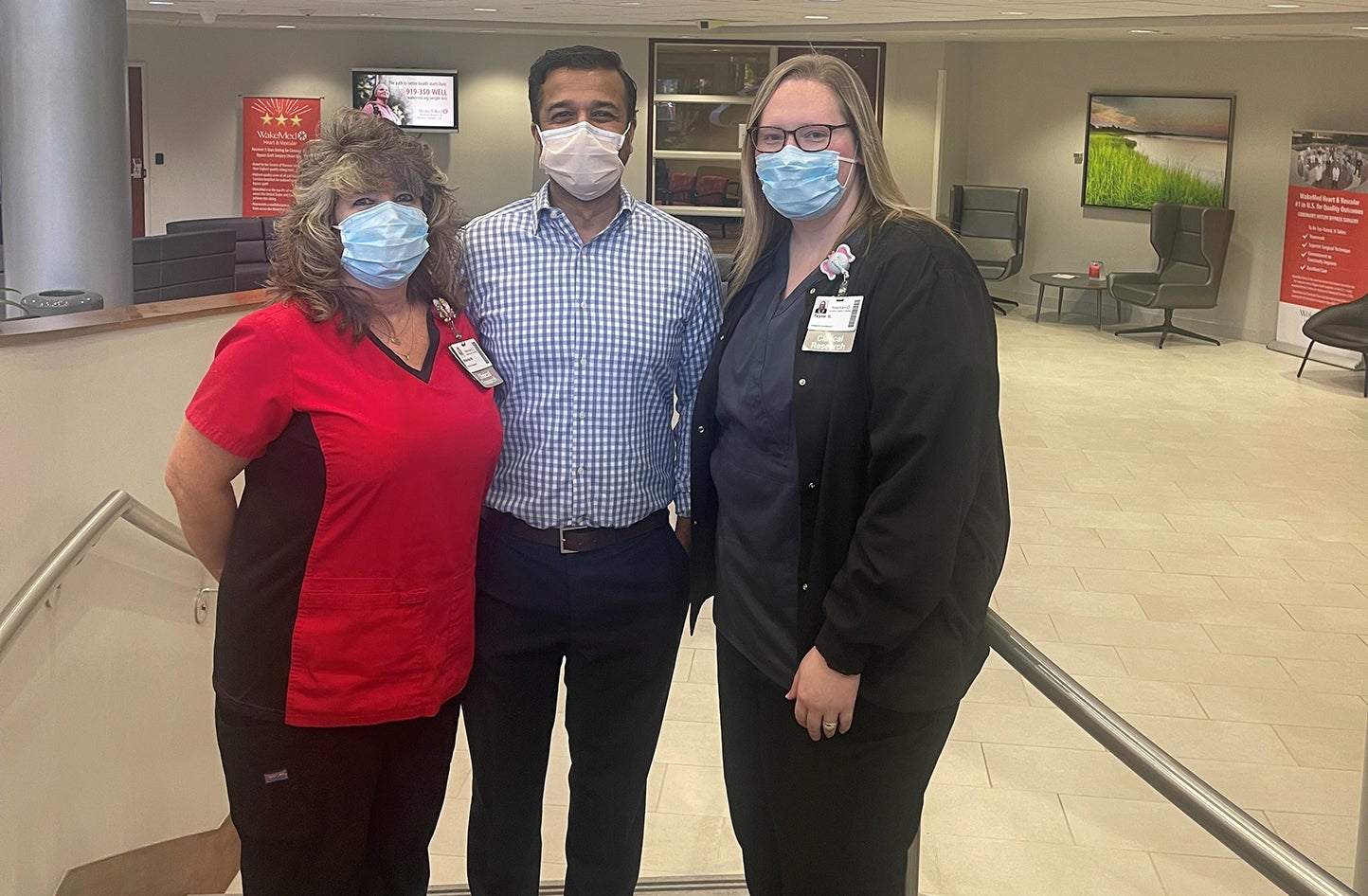WakeMed Treats First AFib Patients with Investigational Pulse Field Ablation (PFA Technology)
November 8, 2022
RALEIGH, N.C. (November 8, 2022) — WakeMed announced that it has treated its first atrial fibrillation (AFib) patients with the VARIPULSE™ Catheter as part of a U.S. Clinical trial from Biosense Webster, Inc., part of Johnson & Johnson MedTech*. The admIRE study is evaluating the pulsed field ablation technology for the treatment of drug refractory symptomatic paroxysmal atrial fibrillation (PAF) during standard electrophysiology mapping and ablation procedures.
AFib is the most common type of cardiac arrhythmia affecting an estimated 33 million people globally1. By 2030 the number of people with AFib is projected to increase by up to 70 percent2. This ablation technique may help spare other tissue types from inadvertent injury to adjacent structures such as the esophagus, pulmonary vein connective tissue and the phrenic nerve3.
“Atrial Fibrillation is continuing to grow in prevalence around the world and electrophysiologists are looking for innovative treatment approaches to help drive efficiencies and better patient outcomes,” said Dr. Ashish Patel, medical director of WakeMed Heart & Vascular — Complex Arrythmia. “Pulsed field ablation has the potential to change the way we treat AFib, ultimately helping to improve the lives of patients, and the admIRE study is allowing us to explore this further.”
admIRE is a prospective, multi-center, non-randomized study that will enroll more than 400 patients in the U.S. to evaluate the safety and effectiveness of Biosense Webster’s Pulsed Field Ablation (PFA) Platform, the principal components of which are the VARIPULSE™ Catheter and the TRUPULSE™ Generator. The study will evaluate the technology, while also evaluating the incidence of primary adverse events within seven days post-procedure.
In September 2020, Biosense Webster announced that it had enrolled the first patients in the inspire clinical study in Europe*, evaluating safety and effectiveness of the VARIPULSE Catheter and TRUPULSE Generator. In August 2021, Biosense Webster announced initial data from the inspire study at the ESC Congress 2021 demonstrating acute procedural success** in 100 percent of study subjects with no procedural serious adverse events.
The VARIPULSE Catheter and TRUPULSE Generator are investigational technologies are not approved by regulatory bodies in any market today. To learn more about the admIRE study, visit www.clinicaltrials.gov.
About WakeMed Health & Hospitals
Serving the community since 1961, WakeMed is a not-for-profit health care system founded and based in Raleigh, N.C. WakeMed exists to improve the health and well-being of our community by providing outstanding and compassionate care to all. WakeMed’s 970-bed system comprises a network of facilities throughout the Triangle area, including three full-service hospitals, seven emergency departments, a dedicated Children’s Hospital and Rehabilitation Hospital, more than 80 physician offices and Wake County’s only Level I Trauma Center. WakeMed’s mission-driven team includes more than 10,300 employees, 1,000 volunteers and 1,300 affiliated physicians, along with the more than 700 physicians and providers with WakeMed Physician Practices — all representing the best minds and the biggest hearts and the finest quality in health care and community health. For more information, visit www.wakemed.org or follow WakeMed on Facebook, Twitter and Instagram.
# # #
*The Johnson & Johnson MedTech Companies comprise the surgery, orthopaedics, vision and interventional solutions businesses within Johnson & Johnson’s MedTech segment.
**Acute Procedural Success defined as confirmation of entrance block in all clinically relevant targeted PVs after adenosine/ isoproterenol challenge. Use of a non-study catheter to achieve PVI is considered an acute procedural success failure.
1. Chugh SS, Havmoeller R, Narayanan K, et al. Worldwide epidemiology of atrial fibrillation: a Global Burden of Disease 2010 Study. Circulation 2014;129:837-47.
2. Zoni-Berisso M, Lercari F, Carazza T, Domenicucci S (2014) Epidemiology of atrial fibrillation: European perspective. Clin Epidemiol. 6: 213-220.
3. Verma, A. et al (2021). Primer on Pulsed Electrical Field Ablation: Understanding the Benefits and Limitations. Circulation. Arrhythmia and electrophysiology, 14(9), e010086.